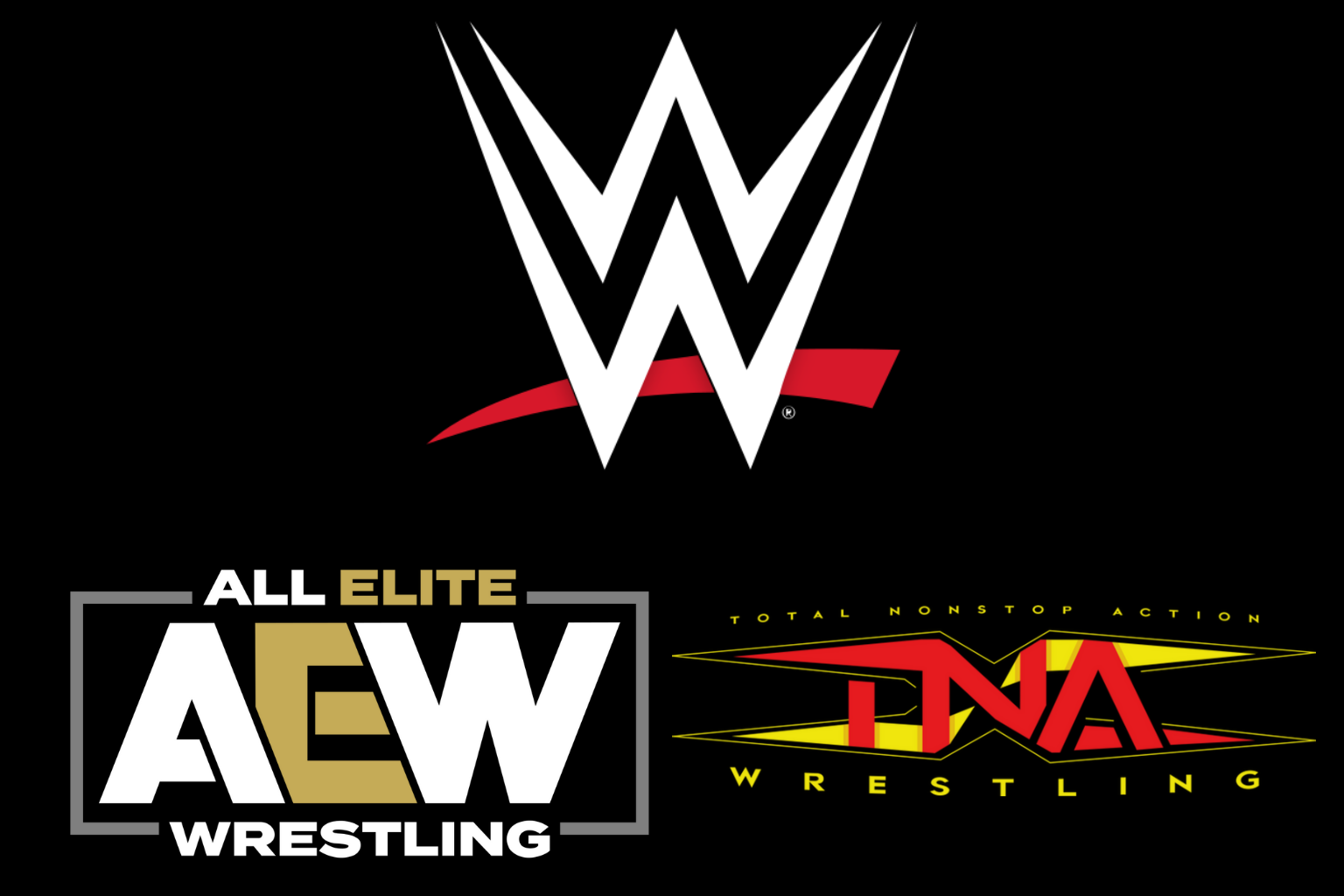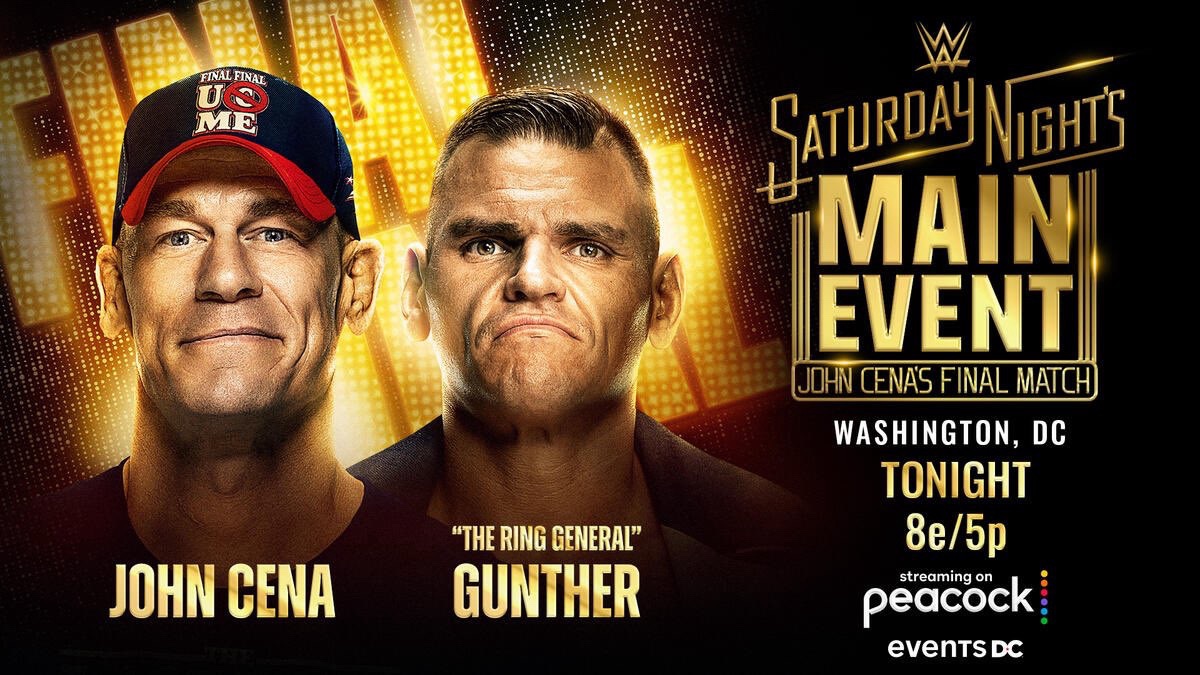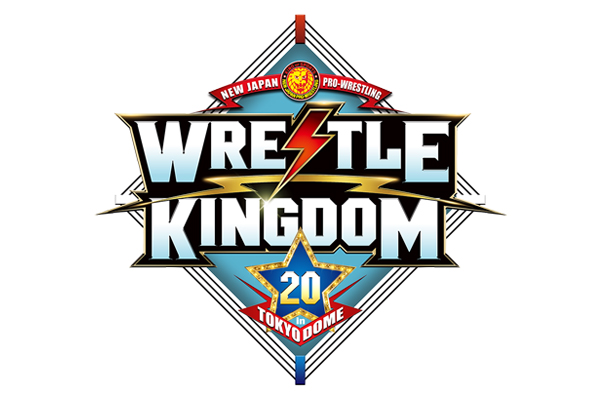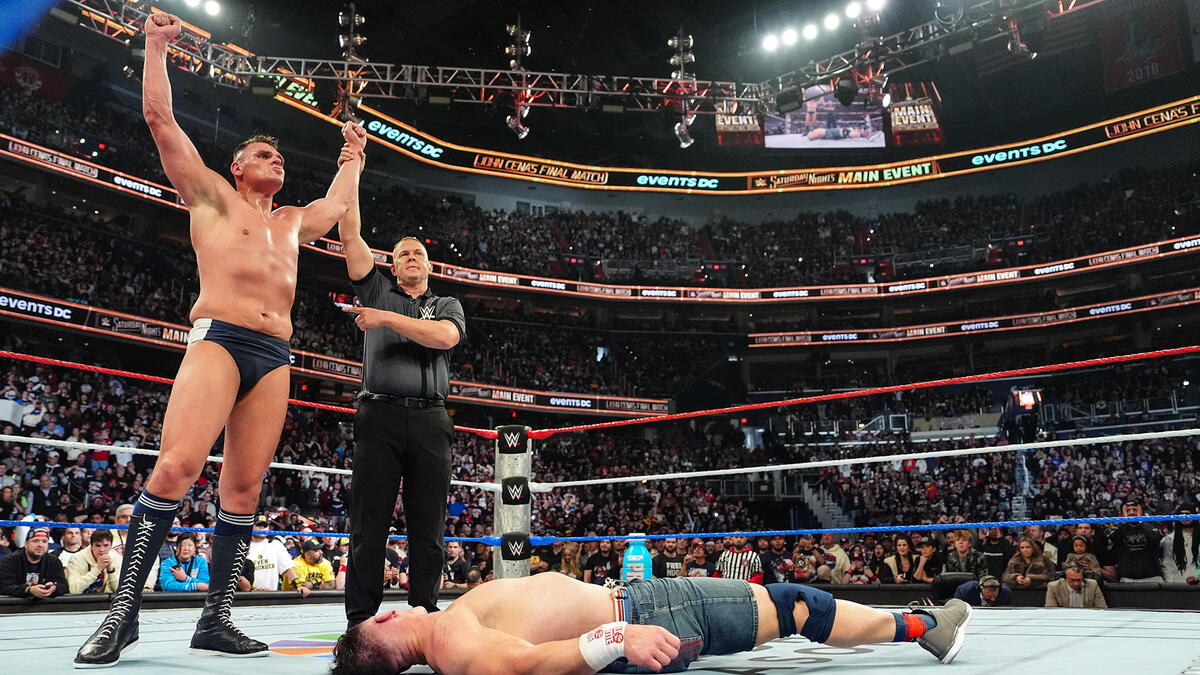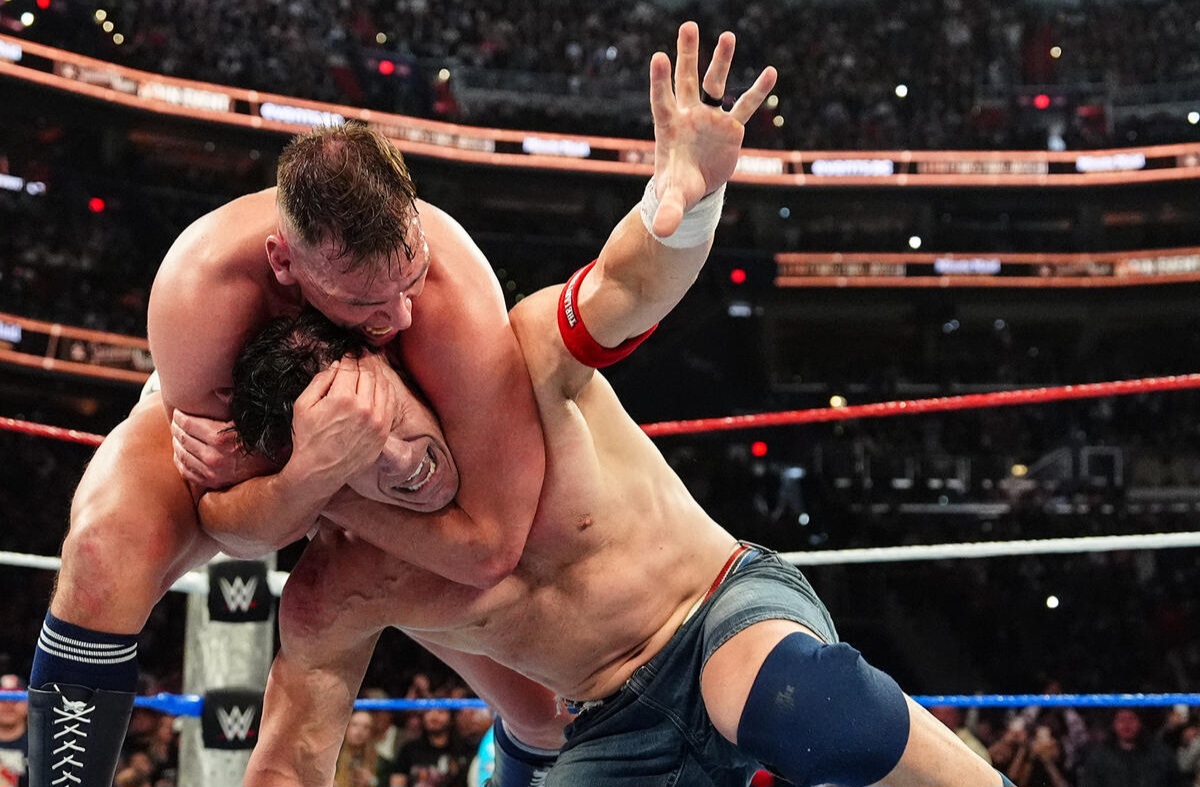To be frank, it’s been the kind of week that leaves you questioning your own investment in this medium. That’s not the story obviously, there are far bigger concerns than my or anyone else’s distaste for it all. With that being said, the in-ring highs and lows feel even more secondary than usual with such a horrifying cloud hanging over the industry. For better or worse though, the bell continues to ring and that’s what this project is about, irrelevant as it may be.
Even still, I feel compelled to stress that even if focusing on the graps, please take the week’s actual stories as seriously as possible. Pro wrestling desperately needs fixing, plain and simple.
Axiom & Nathan Frazer vs. Baron Corbin & Bron Breakker (NXT TV)
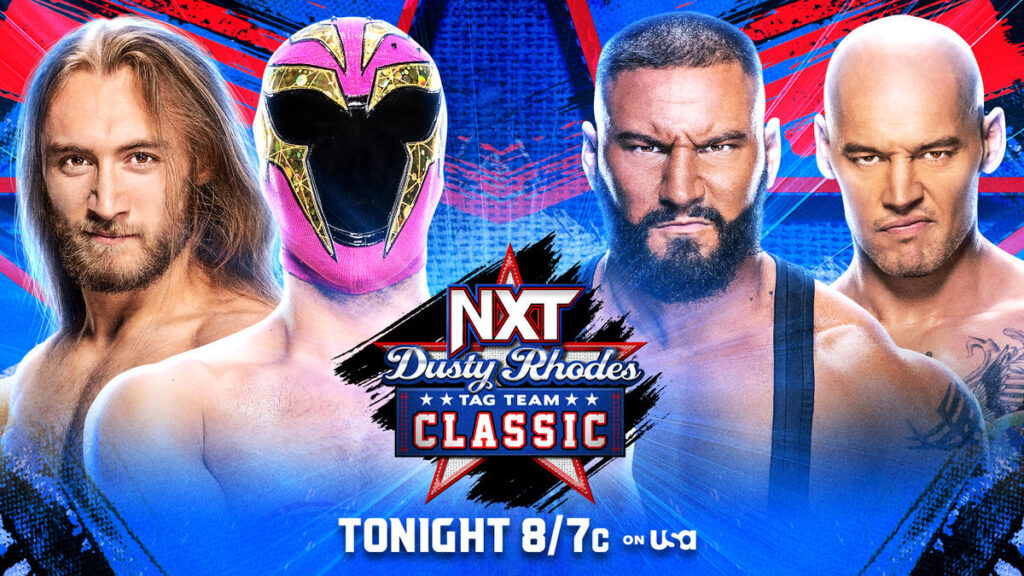
You know, I’m wrong about most things, but I’ve always felt that Baron Corbin would be a natural tag team wrestler. While without the dynamism for some of his prior singles roles, Corbin has always had tremendous offence, often thriving in multi-man matchups. Granted, he probably wouldn’t be Arn Anderson in the tag team arena, but Corbin felt like the kind of tandem bruiser who would’ve spent a single Real World Tag League alongside Stan Hansen.
Well, this isn’t that, but it’s closer than I would’ve expected the world of NXT to allow. Two weeks ago, Corbin and Bron Breakker kicked off their Dusty Rhodes Tag Team Classic campaign, toppling Gallus in a match that I didn’t watch. Elsewhere, Axiom and Nathan Frazer won their own quarter-final matchup, beating Performance Center products Hank Walker and Tank Ledger. Those two victories set up a semi-final that for this setting in particular, boasted immense potential.
It delivers on that too, even featuring a piece or two that I didn’t anticipate. Much of this is as advertised though, which is very much to the bout’s benefit. Axiom and Frazer take an exciting shine at the bell, overwhelming the big lads as the action spills to ringside. It strikes a delicate balance with that burst, as well as the chaotic closing stretch. Both portions feel frenzied while flowing seamlessly, producing highlights without interrupting an organic flow.
Surprisingly, Axiom and Frazer then build on that with a brief control segment, targeting Corbin’s arm. It’s a brief detour but one that I always appreciate as theoretically, babyface wrestlers should have tactics too. In this case, it’s not even much of a stretch, as this crowd is into Breakker and Corbin’s emerging alliance anyway. Regardless, Corbin soon clubs his way back to neutral, with he and Bron then exploding into action via consecutive catch counters.
Their actual heat segment is almost entirely concealed in a picture-in-picture break, though it still features some Breakker bursts along the way. Frazer’s hot tag soon follows, bringing that signature speed as they go into the conclusive leg. As expected, the babyfaces are at home in that fireworks display, as is Bron Breakker. Due to his aforementioned offence though, Corbin is right there with them, shining bright as multi-man sequencing takes centre stage.
The result is terrific TV, packing thrills in a 12-minute opener. To me, this is the hook of a tag team tournament, allowing different pairings as singles stars vie for the cup. Under the NXT umbrella, they couldn’t have done much better than this on that front, finding a perfect stylistic clash for their two enticing new tandems.
Hiroshi Tanahashi, Kazuchika Okada & Tomohiro Ishii vs. TMDK (NJPW The New Beginning)
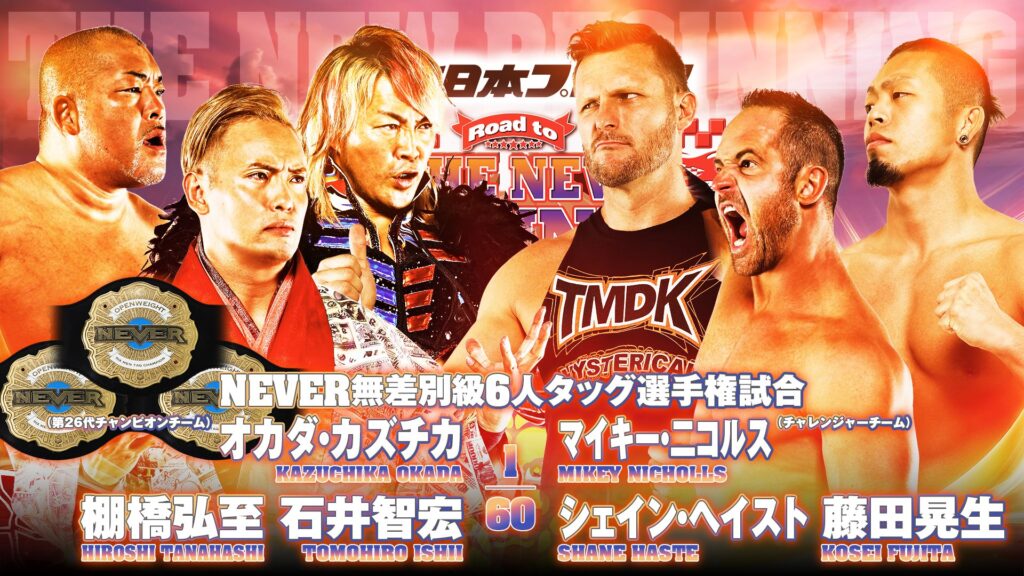
In his final match at Korakuen Hall, Kazuchika Okada went out with a bang, making one last defence of the NEVER Openweight Six-Man titles. Okada claimed the belts in May, forming an all-star trio with Hiroshi Tanahashi and Tomohiro Ishii to topple the short-lived Strong Style squad. Since then, it’s been the highlight of Okada’s form, particularly in the Non-Bryan Danielson Division. Over their eight defences together, the trio have overcome legends as well as promotional outsiders.
In terms of star power, their conclusive defence wasn’t especially notable, meeting the TMDK lineup of Kosei Fujita, Mikey Nicholls and Shane Haste. On that side of the ring, Fujita is very much the story, turning heads as Zack Sabre Jr.’s protégé. While it’s significance can’t compare to Okada’s farewell, this match feels pivotal for Fujita also, shining brighter than ever under the spotlight. He’s not the only one either, with the occasion also drawing truly inspired performances from Haste and Nicholls.
I actually found it to be considerably better than a similar matchup from November, in which Sabre Jr. was in Fujita’s place. It’s nothing groundbreaking in terms of formula either, utilising a familiar outline but simply executing to perfection. With Fujita as an opponent, Okada is able to return to the role that he relished in early 2023, operating as a grizzled veteran opposite the prospect. Their dynamic is central to the match, even bookending the bout.
Ishii is similarly at home in that scenario, with Tanahashi not far behind. They highlight Fujita throughout, isolating him for an extended portion early. Even when the all-stars’ work in control is middling, Fujita ticks every box, firing away with vigour. He’s a natural protagonist, fighting from underneath to eventually reset things. Fittingly, it’s Tanahashi that opens the door for him, quietly continuing his own thread as the team’s weak link, relatively speaking.
Shane Haste’s hot tag is noticeably explosive, transitioning the match to an extended finish. Along the way, we are greeted to some interactions between Ishii and ‘Mad’ Mikey, trading bombs in the latter’s typically wild and woolly way. In addition, the champions continue to unite for shifts of momentum, often combining neatly during their final title defence. It’s a flattering presentation for all involved but again, one that particularly unlocks Fujita.
Okada plays a major part in that, even while spending much of the middle chunk in the background. Once it returns to he and TMDK’s young gun though, there’s a noticeable effort, making the absolute most of Fujita’s current skill-set. The result is a heroic closing stretch for Fujita, including some superb false finishes along the way. Historically, it’s obviously about Okada, sharing an emotional post-match moment with the Korakuen Hall crowd.
Inside the ropes though, it’s built around Fujita, leaving the match virtually transformed by its purpose. For that reason, this is not only one of the all-stars’ finest defences, but perhaps their most effective. While it certainly won’t be the accomplishment that Okada is most remembered for, his NJPW stint has concluded with the strongest reign in NEVER Openweight Six-Man history. Yes, writing that sentence was also funny, but a terrific match nonetheless.
Women’s Royal Rumble Match (WWE Royal Rumble)
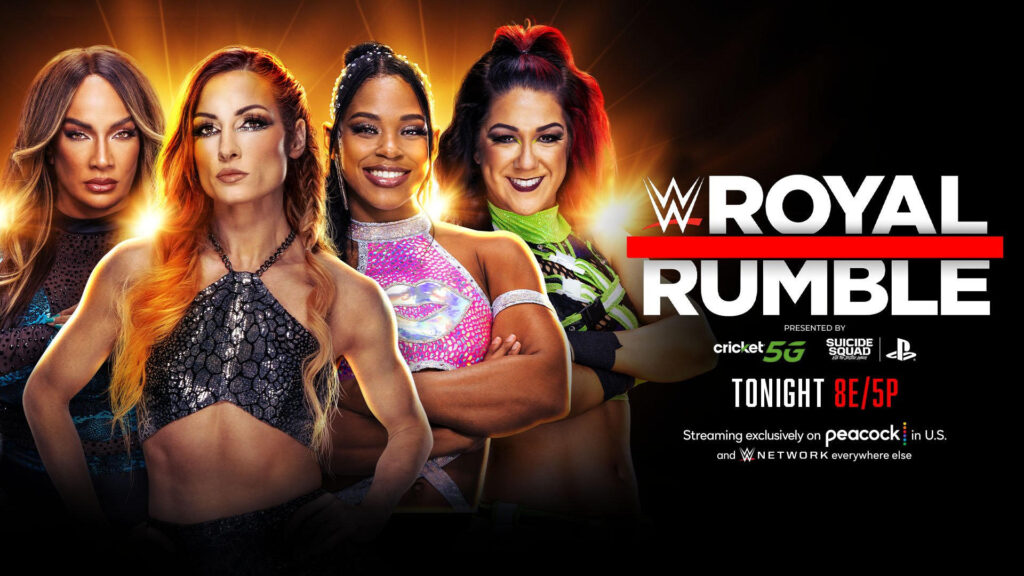
After such an intriguing and polished build, WWE’s Royal Rumble event fell a distance short of my expectations. Much of that came down to the main event, as a highly-anticipated men’s Rumble failed to hook the stadium crowd. There wasn’t much to write home about elsewhere either, with the PLE peaking at its opener. Interestingly, the pre-show hype surrounding the women’s Royal Rumble match felt minimal by comparison, comfortably overdelivering inside the ropes.
Certainly, it’s not without woes, especially early. The first half and change features some faulty execution, at other times feeling overly coordinated. That hinders the match’s initial flow, coming off a touch clunky. However, it’s never short on ideas, particularly compared to its male counterpart. Naomi’s return provides the match with an immediate moment, putting in a substantial shift, even with extended stretches in the background.
At #3 though, the match gets its most valuable entrant, as Bayley enters with palpable purpose. From that point forward, the eventual winner feeds almost every single remaining entrant, often taking their biggest and best bomb. It’s the most Bayley performance imaginable, just willing herself into the role that this match requires, even with glory ahead. In fact, that destination allows her to be even more selfless, not requiring any shine beyond the outcome.
Another major story is Jordynne Grace, which would’ve been the case even if her outing was uneventful. In execution though, it’s quite the opposite, as TNA’s Knockouts Champion shines staggeringly bright, actually providing the match with possibly its sharpest work. Her offence not only translates to the stadium setting but truly belongs, pairing those bursts with superb bumping throughout. Sprinkle in the slightly jarring novelty of such an occasion, including a reunion with Naomi, and you have a memorable Rumble appearance.
Admittedly, not every entrant is able to outwrestle their response, with many entering to apathy or confusion. While it’s notable that these matches no longer require guests or legends, it’s equally apparent that a lot of work needs to be done in establishing new names, let alone getting them over. Many are blank canvases to the WWE audience, and some aren’t much more than a fleeting NXT memory to even the most ardent viewer.
That’s only made Chelsea Green more impressive, which is again on display in the Rumble. Green is terrific at maximising her skill-set as well as the minutes, no matter how minimal, at her disposal. In this case, she plays punching bag for much of her time, comedically staggering from one disaster to another across a surprisingly lengthy stay. It’s a great example of standing out as a character, even while actively spotlighting others’ offence.
Beyond those highlights though, the match is spirited but uneven for much of its runtime, then finding a steadier shape with Nia Jax and Becky Lynch’s arrivals. The former has been used wonderfully well since her return, with that trend continuing on Saturday. In fact, she’s central to some of the match’s most engaging moments, ultimately providing Jade Cargill with the perfect statement to make for her in-ring debut.
Cargill’s entry is where the match truly levels up, then flowing seamlessly to a smart finish. It’s not a classic Rumble by any means, though it is a strong one nonetheless. For the women in particular, it’s probably the division’s strongest take on the Rumble since the original, which had a head start for obvious reasons. There’s work to be done in terms of making more of this lineup matter but a good Rumble regardless, finishing with flair to boot.
Bryan Danielson vs. Yuji Nagata (AEW Collision)
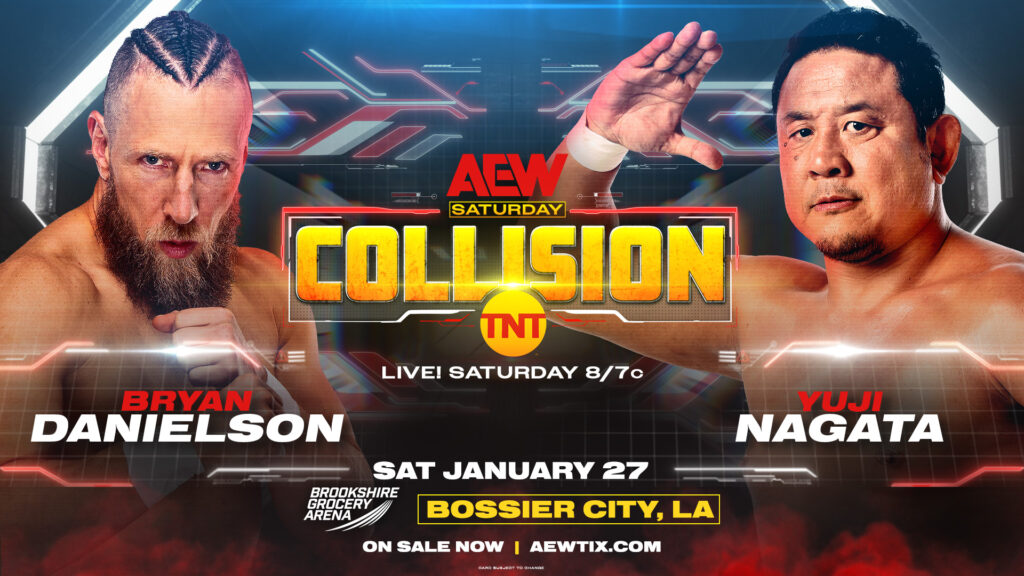
At 55 years old, Yuji Nagata returned to AEW on Saturday, making his second appearance for the promotion. Incredibly, the first came almost three years ago, entering Daily’s Place for a memorable television opener with Jon Moxley. Since then, Nagata hasn’t really slowed down much, even claiming All Japan’s Triple Crown Title in 2023. He initially shared the ring with Bryan Danielson in 2002, wrestling nine tag team matches over the following two years.
With Danielson seemingly on the road to a shot at the alleged stateside Triple Crown, this match is also assisted by Eddie Kingston on commentary, treating Nagata with the respect you’d expect. That sentiment bleeds over to much of the action too, sharing a polite, almost exhibition-like opening. It feels a little like a spar between old friends, reuniting and seeing how things have changed. There’s a playful tint to the grappling, embracing the audience’s excitement as they go.
Competitive pride soon renders that an afterthought however, with Nagata targeting the left shoulder only to eat a fiery flurry for his troubles. Danielson’s retort almost serves as a warning, happily resetting after showing Nagata how swiftly he can threaten a finish. The veteran is fittingly unmoved by the danger though, returning to that left shoulder and working it over with precision. It’s such a skilful segment, even with minimal snap.
Whenever the sustained control hinders their pace, Danielson responds too, giving the bout a seesaw rhythm. It still veers Nagata’s way, Danielson just never settles, eventually making a target of Nagata’s left leg. That duel shapes the remaining runtime, sharing exchanges to their respective weakened body parts. It’s a smart, simple match, the exact type of affair that’s allowed Nagata to age so gracefully as a grappler, sprinkling in some showmanship along the way.
Granted, he’s not overly showy in that regard, but there’s an undeniable charm to Nagata’s game nonetheless. He’s very aware of the remaining role for him to realistically play, still capably turning it on where necessary. This particular matchup doesn’t even require much of a reach in that regard, with Danielson gleefully meeting him in the middle for something steady. They don’t swing big, nor do they have to, being embraced by an enthusiastic crowd regardless.
It’s not a match that’s quality will climb particularly high among Danielson’s recent catalogue, but it is another example of AEW’s greatest strength. That, of course, being their willingness to book weird, quirky or outright insane matches, just because. It was a banner week in that regard, with this being an unsurprising hit inside the ropes too.
Daniel Garcia & FTR vs. House of Black (AEW Collision)
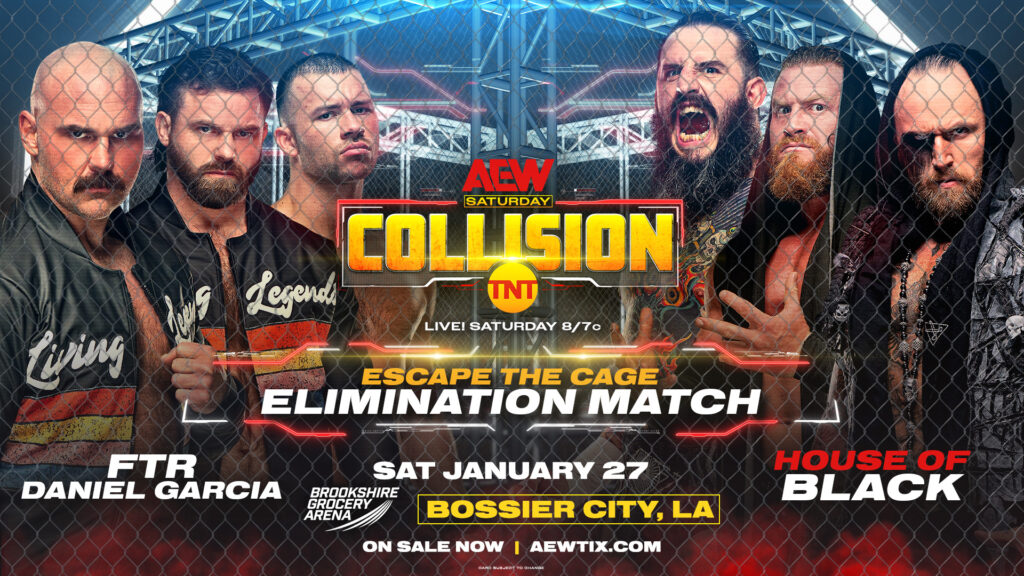
When it comes to ‘escape the cage’ matchups, I’ve always been slightly torn. It’s hard to argue with the increasingly common sentiment that such a stipulation actively works against the concept’s core purpose. After all, it’s a structure (even if not box-like) designed to contain rivals, but that doesn’t mean the alternative can’t be portrayed effectively. In fact, the element of escape can produce immense drama, but it’s a very fine line.
Tackle the stipulation too literally and any conflict will be lost to an ongoing race, which could’ve been especially problematic in this scenario. FTR have been battling House of Black for much of the past month, being joined by Daniel Garcia along the way. It’s produced some tremendous in-ring action but with a post-match brawl last week, had also escalated enough to earn this stipulation. With an overemphasis on the race to escape, that rivalry would’ve been rendered irrelevant.
Thankfully, they avoid that almost immediately, leading with a brawl at ringside. Throughout the show, Garcia’s status had been unclear, with a backstage attack positioning Mark Briscoe as a potential replacement. Initially, those differing pieces don’t translate particularly well to the live action, but it’s a far more complete picture by the finish. Once all six are actually inside the cage, the match’s strongest portion is underway, reminding me of FTR’s 2021 Blood & Guts showing.
To their credit, House of Black are right there with them too, reiterating the chemistry that’s emerged in this programme. The physicality is immense, arriving with a spite befitting the build. During that segment, it’s less about set pieces or stunts, instead leaning on sheer aggression and intensity. Chops, punches and an occasional wrestling move, a winning formula for this environment. Best of all, they even use the cage, imagine that!
Among a collection of strong performances, Cash Wheeler once more jumps off the page, executing every single step to perfection. Again though, everyone is sharp here, wrestling with palpable passion yet not overthinking the ‘escape the cage’ stipulation. Once that element becomes emphasized, it’s admittedly a match that in terms of logic, will require a squint or two. Dax Harwood’s exit feels like the most jarring instance in that regard, though it’s almost disguised by the insanity of Brody King’s own retort.
On the other hand, there is some neat psychology at play also, as Buddy Matthews attempts a decoy escape in order to isolate Garcia. After all, the latter is the main character of this story, once again bringing a visible fire out of Malakai Black. Their closing duel is slick without sacrificing any urgency, maintaining the match’s prior pace. They have a finish line worth racing towards too, involving Julia Hart and Mark Briscoe for a genuinely triumphant conclusion.
It’s an example of this particular stipulation’s value, allowing a theatrical flair that perfectly progresses Garcia’s story. To his credit, Black proves a fitting mountain for him to climb too, ending Collision on a note that exploded beyond the somewhat modest setting. This feud is quite comfortably the best of House of Black’s entire run, rejuvenating FTR in the process. Best of all though, it’s showcased Daniel Garcia, building on his close to 2023 with a promising start to the new year.
An engaging, exciting television main event, reaching their destination with a rollercoaster route.
Konosuke Takeshita vs. Naruki Doi (DDT Sweet Dreams!)
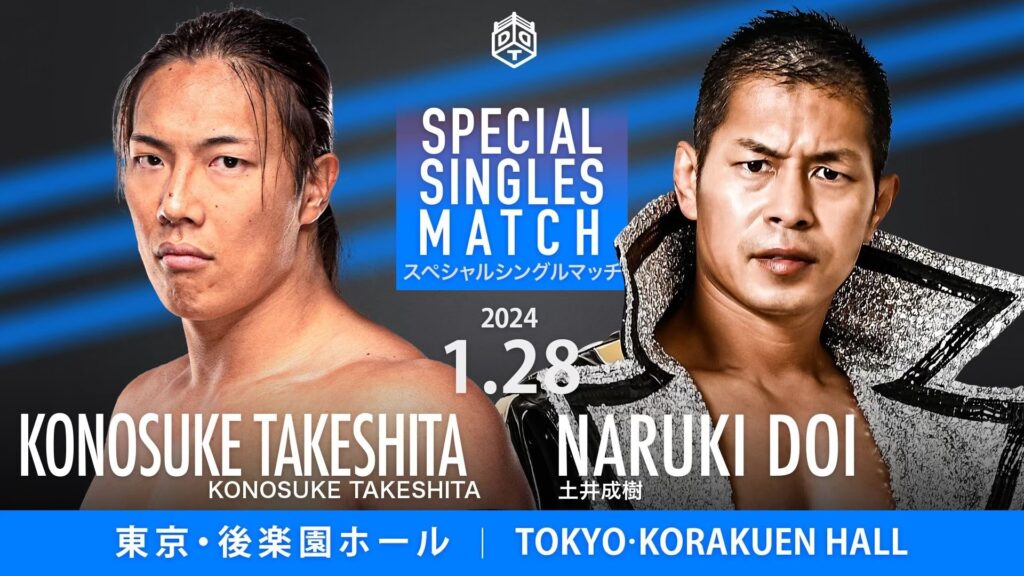
While his AEW creative has been far from fixed, Konosuke Takeshita has quietly had a tremendous start to 2024. That begun opposite Darby Allin, then building on their singles thriller with a wild tornado tag at Daily’s Place. This past weekend though, Takeshita returned to Japan, wrestling a decent tag team bout in AJPW before heading home to DDT. He was greeted by a first-time matchup, meeting Dragon Gate legend Naruki Doi.
Doi has been rejuvenated since going freelance in late 2022, continuing to work DG regularly regardless. DDT has been a regular host for Doi over the last year and change, remaining razor sharp in his forties. He’s an example of a wrestler that you wouldn’t necessarily expect to age gracefully, always jumping off the page with such rapid offence. He’s still very much got it though, thriving against Takeshita in an unofficial sequel to the Allin shootout.
Surprisingly, this matchup is actually a smidge shorter, though it sports a very similar outline. Takeshita takes most of this, charging through a dynamic Doi jumpstart to emphatically take control via brainbuster at ringside. That launches a Takeshita control segment that hope spots aside, really shapes the match’s general rhythm. Takeshita is an interesting watch in that regard, as if given too much uninterrupted room, he can limit himself as a bully antagonist.
Much like Allin though, Doi forces him to earn that dominance, creating pockets of horror. They find a neat pattern with that dynamic, as Doi is continually punished for threatening a counter. Takeshita takes enough of this to make a direct route to victory feasible, landing thudding blows and walking through almost any retort. As a result, Doi’s eventual rally feels notable, kicking out Takeshita’s leg and chipping away with counters until a single sustained shift in momentum.
The rest are merely flashes, with Takeshita’s answer only ever being a step or two away. That’s again the case at the finish line too, rather bluntly responding to Doi’s sole flurry of note. This is quite the presentation for Takeshita, feeling truly unstoppable in a hectic firefight. It seems increasingly apparent that this is the blueprint for Takeshita, particularly as a heel. His offence is showcased without unnecessary segments that stretch things thin.
Instead, it’s almost like a compilation, neatly layering Takeshita’s crunchiest bombs. He’s such an explosive wrestler, which is why some of his heel instincts feel almost wasteful. Granted, not every opponent will be Darby Allin or Naruki Doi, though the point stands. Whenever I watch the latter, I’m stunned by his remaining burst, still pushing a superb pace, even at 43 years old. Very good match, achieving an awful lot over its ten minute runtime.
Drew McIntyre vs. Sami Zayn (WWE RAW)
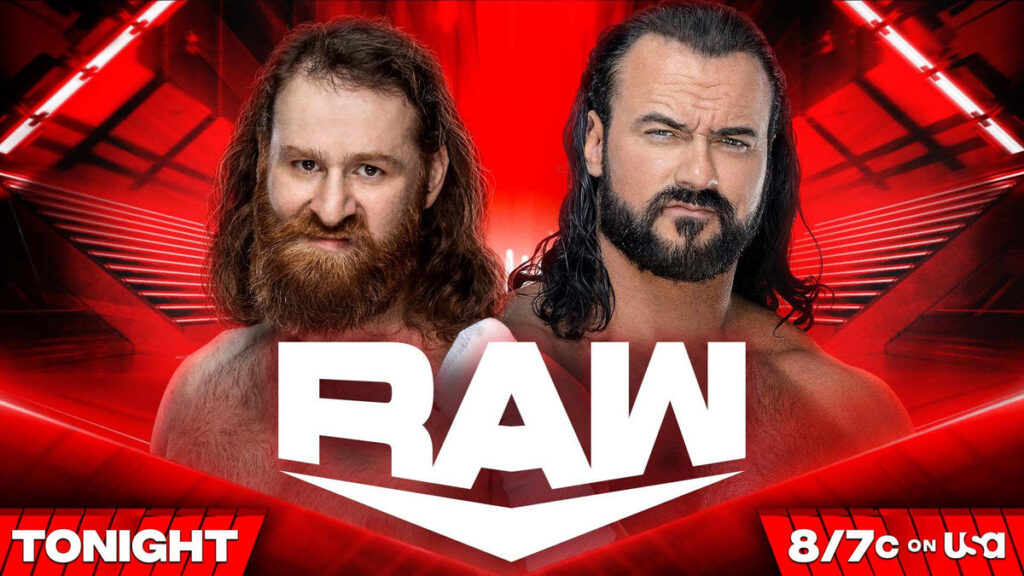
Since beginning his gradual heel turn in late 2023, Drew McIntyre has been in the form of his life. It’s been quite the rebound too, particularly considering the way things felt at SummerSlam. McIntyre had run his course as a babyface, reaching the mountaintop and stumbling on any attempt to repeat that feat. As a bitter, resentful villain though, McIntyre feels truly rejuvenated, even without any wins in major matches.
As expected, that trend continued on Saturday, as McIntyre’s Royal Rumble peaked with final four status. On the following RAW though, McIntyre was able to virtually erase that result, getting heat on an injured CM Punk. The show’s opening segment made the best of a bad situation, giving McIntyre a noteworthy line while setting up his TV main event with Sami Zayn. Entering at #30 on Saturday, Zayn was surprisingly insignificant, dispatching Damian Priest before being eliminated by McIntyre.
This latest meeting is their third singles match since October, with the second being an extended 20-minute opener. That bout expanded on the original’s qualities, maximising a simple layout with physicality and polish. It’s a natural pairing with this current babyface – heel dynamic, as Zayn’s usual approach does an awful lot for McIntyre by default. As always, he relishes the chance to sell and McIntyre is equally thrilled to provide him with suitable material.
While not as expansive, this match is the most direct portrayal of that combination, as McIntyre is now fully removed from any shade of grey. As a result, he’s able to fully embody the heel role, launching Zayn around with a smug arrogance. That demeanour opens the door for a snappy Zayn shine, even placing his barricade moonsault in picture-in-picture. McIntyre’s cutoff arrives in that same break though, swiftly taking over and securing some heat before their return.
One constant throughout this series, regardless of disposition, has been the physicality. Their matches pack a substantial punch, with Zayn continually meeting McIntyre in the middle for strike exchanges. Those instances never sacrifice their broader rhythm though, as Zayn remains firmly cemented as the bout’s underdog. Some of that is simply implied by the physical contrast on display, with Zayn playing his best Terry Funk cover, to co-sign Ibou, of WrestlePurists.
In fact, McIntyre is so dominant in the meat of this match that they can throw a bone Zayn’s way on the finish. It’s a neat idea with solid execution, protecting Zayn who remains unable to defeat McIntyre. That play doesn’t undercut a very necessary win for McIntyre, yet it does suggest that Zayn may eventually overcome this particular hurdle. Good television main event in exactly the ways you’d expect, more of the same from two incredibly reliable wrestlers.

